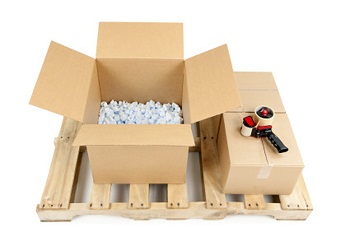How To Protect Your Parcel Packaging

Choosing the right packaging packages to protect and ship all of your products is not done in a day. It is necessary to carry out several tests before being satisfied. In this article we give you some tips to help you in choosing your shipping packages.
Some questions to ask:
Before entering the characteristics of packaging, it is necessary to ask some questions that will guide your choices later:
-
What Types of Product do you want to Ship? Are they Particularly Fragile or Sensitive to External Conditions?
This question is important because the protective and shipping packaging will not be the same depending on the type of products to be shipped . Indeed, a bottle of alcohol will require more products than a large format book. It is strongly recommended to use packs with built-in cushioning module for the bottle of alcohol while the book will simply require a cardboard envelope or shipping case.
-
Which Carrier will Make the Delivery? Will the Package be Transported on a Pallet?
The choice of the carrier may be more important than it seems: depending on the chosen carrier, the number of manipulations and shocks suffered by the individual package can go from single to double ! It is therefore important to protect your package for this “test”. The cushioning products must prevent the movements of the product but also protect it from external shocks or even internal shocks if there are several products in the same package. If your package is on a pallet, it is protected from breaking loads but not the risk of crushing. The latter is due to the stacking of heavier packages on a light package.
-
What will be the Transport and / or Storage Conditions: Cold, Heat, Humidity?
In order to better protect its products, it is necessary to know the conditions under which they will be stored and transported . For example, the carrier’s warehouse may be wet, in which case an additional layer of protection with an anti-corrosive film or a kraft paper covered with reinforced tar must be applied. For pharmaceutical and food products, it is necessary to use isothermal packaging to maintain a constant temperature throughout the delivery.
Bearing and Non-Carrying Products
In logistics, there are two types of products:
- Carrier products that can stand by themselves and support their packaging (eg cans), they can easily support the weight of a package stacked above;
- Non-carrier products that can not stand on their own (eg crystal glasses) and do not support the stacking of parcels above them (the risk of crushing is important).
It is therefore necessary to choose packaging with a groove adapted to each type of product, also taking into account its weight, its fragility and its shipping method.
For international shipments , it is recommended to use triple flute cartons regardless of the weight and fragility of the product because the package will be handled many times. It can be stacked, palletized, loaded and unloaded with more or less precaution. We must therefore put all the chances on his side and protect his package as much as possible!
Protect Your Parcels Against Theft
To send parcels by Royal Mail or via any other carrier is not without risk: there can be a flight at any time. If this happens to you, you are doubly penalized: you have lost your product but you must also organize a new shipment for the customer (with a new product), which impacts your cash flow. It is also necessary to face the discontent of the customer whereas you are there for nothing!
To avoid this mishap at all costs, we recommend using cardboard boxes with flaps or boxes with automatic bottom because these two types of boxes double their thickness once closed. No malicious hand can enter the box to steal its contents.
Another point not to neglect: the closure of the cardboard box with tape. It is important to choose an adhesive that will be able to support the weight of the parcel throughout its transport to avoid any unpleasant opening. There are several types of adhesive tapes:
- Silent polypropylene (PP) tape that can close packages weighing less than 40 kg;
- Inexpensive polypropylene (PP) tape that can close packages weighing from 1 to over 40 kg;
- PVC tape that can close packages weighing from 1 to more than 40 kg;
- The reinforced tape and canvas that is specially designed for packages exceeding the weight of 40 kg.
How to Place the Tape on the Cardboard?
The way to put the tape on the cardboard also helps to strengthen its closure. Thus, depending on the weight of the package, we recommend the following types of closures:
- The U- shaped closure : designed for the transport of light products up to 20 kg, it consists in placing tape along the entire length (where the flaps meet) on the top and bottom of the cardboard, overflowing on the side adjacent;
- The combined L-shaped and U-shaped closure : it can carry heavy products up to 40 kg, it consists in placing the adhesive tape over the entire length as for the U- shaped closure but adhesive is added near the ends of the cardboard to reinforce this closure;
- The H-closure : the most secure closure which consists of placing tape along the entire length of the cardboard (at the flaps) at the top and bottom but also across the width on the four ends of the cardboard. Armored tape can also be added across the cardboard in the middle. It is recommended for heavy packages over 40 kg.
With all these tips, you are ready to ship your parcels to your customers!


